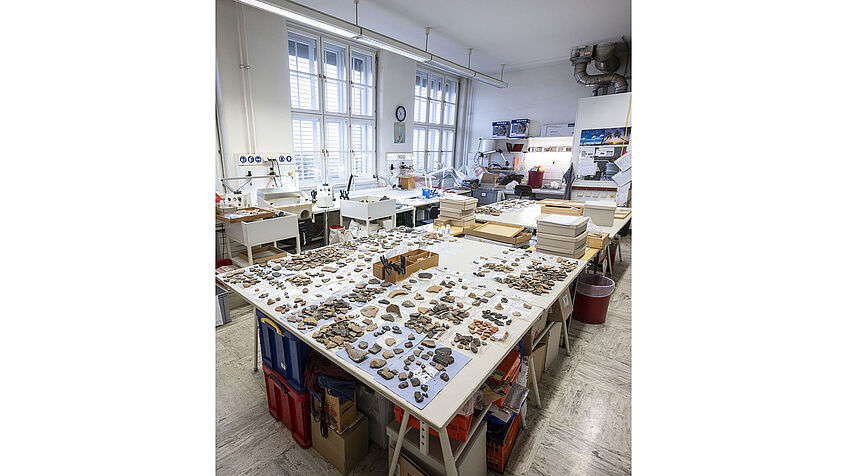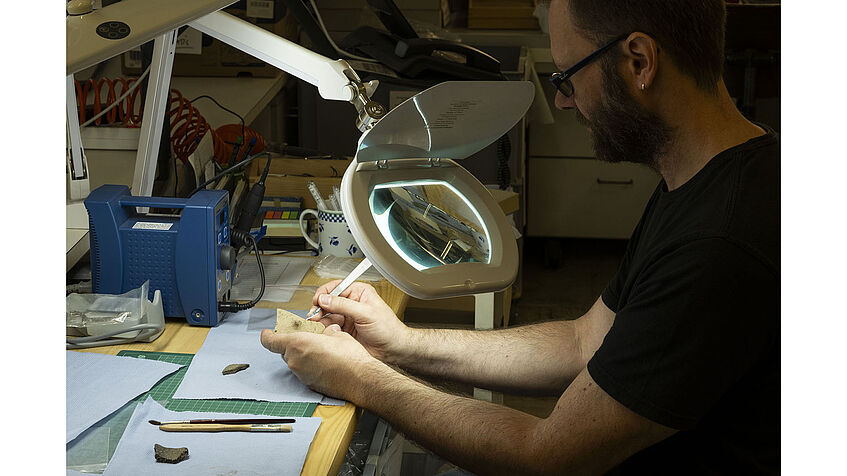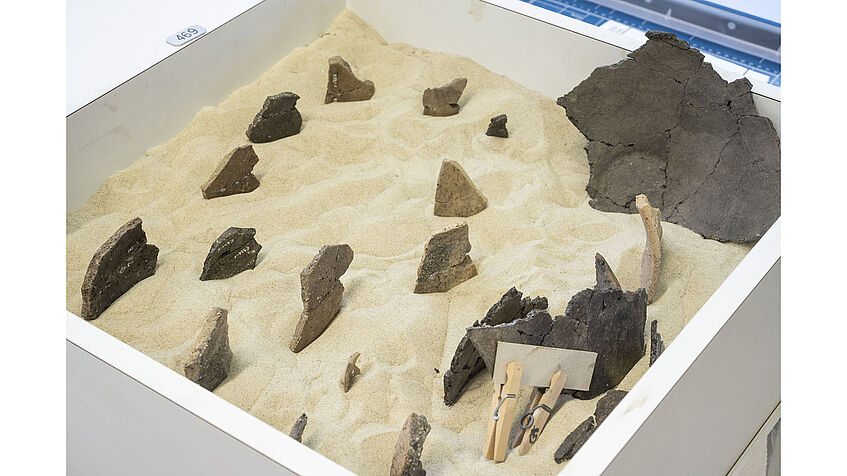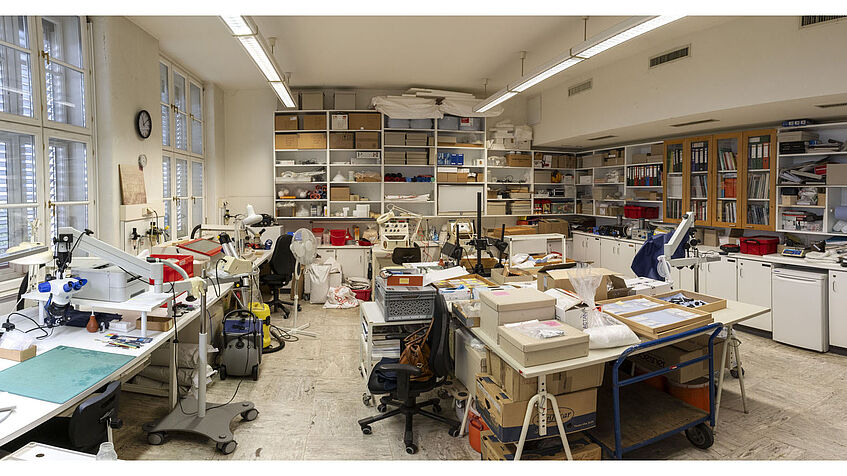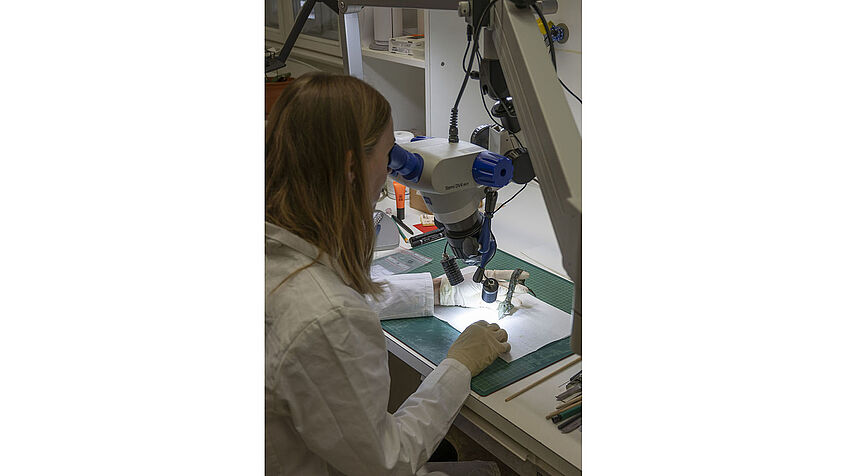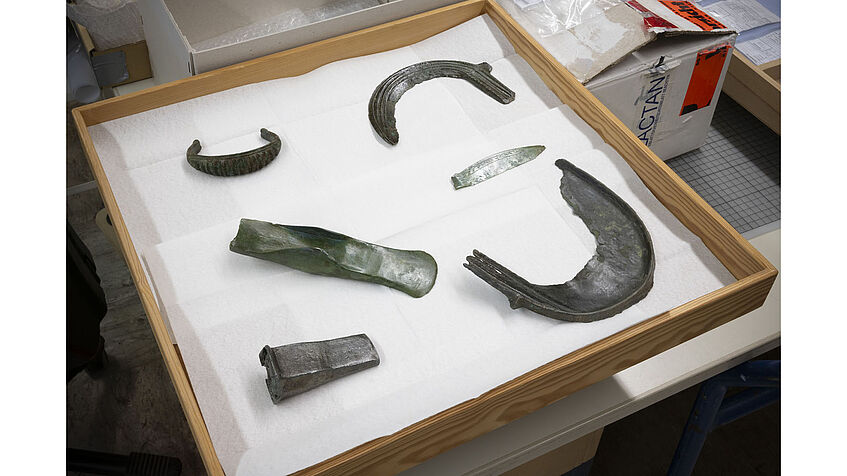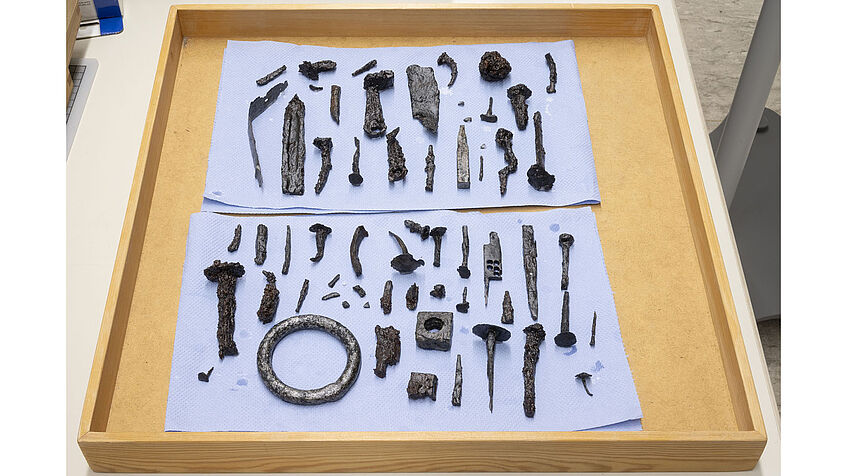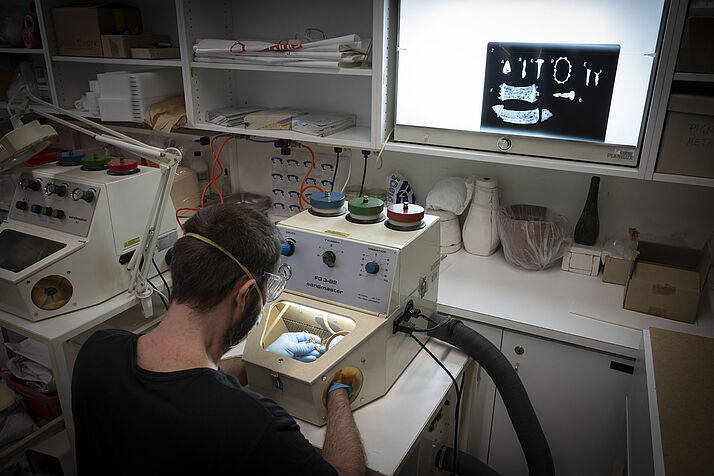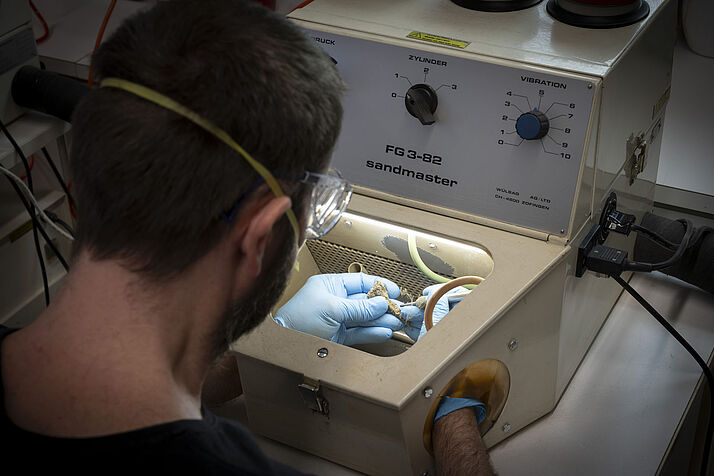Restoration Workshop
Contact
- Email: restauration.uha@univie.ac.at
- Telephone: +43(0)1 4277-40462
- Restoration Workshop
Franz-Klein-Gasse 1/3.Stock
1190 Vienna
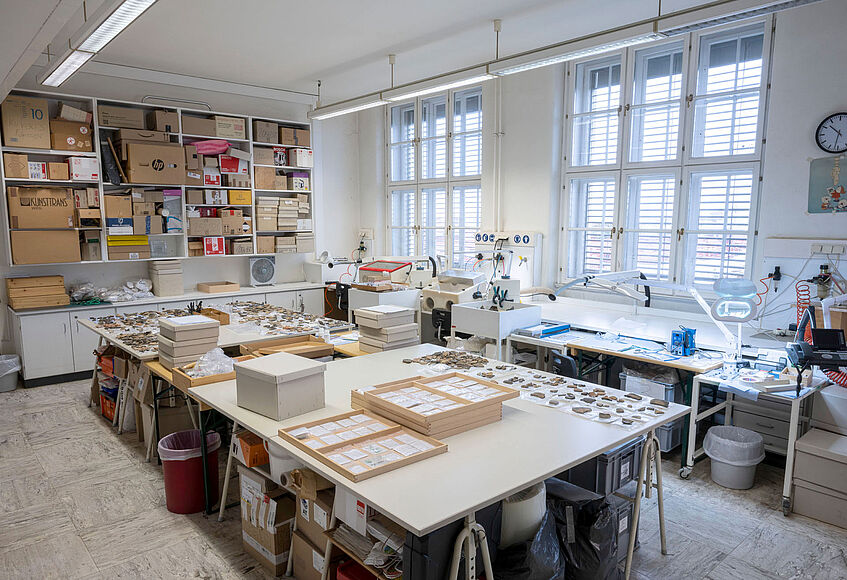
Tasks
The restoration workshop processes the material found during current excavations conducted by the Department or its scientific staff members, including different objects in clay, ceramic, iron, precious metals, wood, bone, glass and stone. The activities of the restoration workshop also include excavation (recovering finds), necessary work in the depot, taking care of old restorations and duplicates in the study collection, student support, and the maintenance of technical equipment such as sandblasters, vacuum drying cabinet, drying cabinet, and other smaller machines.
Workshop and equipment
The Department houses two restoration workshops: a sandblasting laboratory and an artefact preparation laboratory. Both contain hot and cold running water, 220 V and 360 V electrical supply and pressurized air from a central system. The restoration workshops are well-ventilated, have considerable natural light and contain four sufficiently large workspaces each. Each laboratory is also equipped with a chemistry stove with an especially strong exhaust system; this is essential since it is also necessary to work with harmful chemicals (for conservation). Two work tables are equipped with over-head vacuum extractors so that the dust produced from grinding plastic additions can be removed; here one must also wear a dust mask. Larger pieces of equipment include a drying cabinet and a vacuum drying cabinet, both with thermostat, temperature control and timer, in order to dry and conserve archaological objects, as well as a water desalination machine to provide distilled water. Both workshops are provided with large surfaces for the extensive finds.
The elutriation station to remove water-soluble chloride ions and the steam sterilier to remove various organic and inorganic material are found in Labor II.
The sandblasting laboratory contains a vacuum jet, a combined machine with a fine jet and a vacuum jet, and two micro sandblasters to remove corrosion and various deposits on metal, ceramic, bone and stone. All equipment can be used whereever there is enough air pressure (10 bar) and the proper hose coupling.
In the elutriation/washing lab, soil samples (from excavations) are separated in order to recover the various plant seeds and plant remains for palaeobotanic analyses.
This lab also houses the rooms for the Department’s own x-ray machine. X-ray images are a great help not only for the restorer but also often for researchers working on the objects; they make visible – for example – old traces of production such as filing and grinding marks or old repairs and additions, and on iron objects applications in other non-ferrous or precious metals can be recognized. Using x-ray, areas of breakage and damage, if there, can be identified on nearly all types of archaeological objects.

